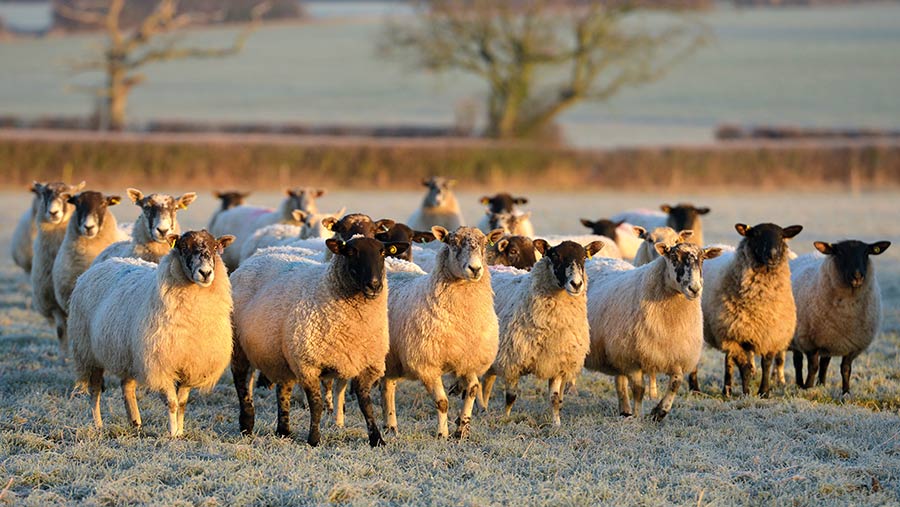Lower demand means cautious outlook for sheep market in 2023
 © Peter Cripps/Adobe Stock
© Peter Cripps/Adobe Stock A cautious sheep outlook is centred on declining demand due to cost-of-living pressures on consumers in 2023 and the high cost of lamb relative to other meats.
This “trading down” will come as bad news for sheep farmers hoping to budget on selling lambs at prices achieved in the past two years.
Farmers Weekly spoke to Iain Macdonald, red meat analyst at Quality Meat Scotland, and independent economist and farm consultant Kevin Bevan to see what the key themes will be for 2023.
See also: Lamb prices under pressure from global imports
Reasons to be cheerful
- The Asian and British Asian population has lifted from 4.2m to 5.5m (+30%) since 2011, according to the England and Wales Census. Sheepmeat is favoured by this ethnic group
- EU prices are expected to remain high due to tight supply, and imports are anticipated to lift 4% next year. UK processors are making exports work despite the paperwork
- World population officially passed 8 billion in November underpinning growing global sheepmeat demand
- New Zealand expects a slightly smaller lamb crop (-1%) after a summer drought and spring snow. The country has already been sending less chilled lamb to the UK (6,500t in 2021/22 versus 23,000t in 2016/17)
- Spring festivals should boost demand earlier this year with Easter (9 April), Ramadan (22 March-23 April) and Eid Al-Fitr.
Pressure on profit and price
- A bigger lamb crop in 2022 and slow finishing because of the drought suggests a bigger carryover of lamb into the new year. Clean sheep kill from June to October was back (-3%) on the year
- Increasingly price-sensitive consumers may baulk at paying £12/kg on average for lamb when compared with pork (£5.50/kg), beef (£8.50/kg) and chicken (£4.50/kg)
- High feed and fertiliser costs will continue to hit margins.
Ones to watch
- China imported 26% less New Zealand lamb in the year to September 2022 compared with 2021. How Chinese demand for lamb responds to a change in Covid rules may limit New Zealand exports to the UK and EU
- How the sterling-euro exchange rate moves is very unpredictable given the recession and tensions caused by the Ukraine war
- Cereal prices and the fortunes of pig and poultry sectors will have a bearing on lamb. If cereal prices ease, demand for these rival meats could increase
- If the UK-Australia free trade agreement is ratified, as expected, the first shipments of Australian lamb under the new deal could be in British supermarkets for Christmas 2023.
The numbers
-25%
Drop reported in volume of lamb roasting joints sold by retailers in the 12 weeks to 30 October (Kantar)
-33p
How far back the Great Britain SQQ is on the year, at 246p/kg (AHDB)
-5.5%
How much New Zealand lamb is expected to drop in price for importers in 2023 (Beef and Lamb New Zealand)
